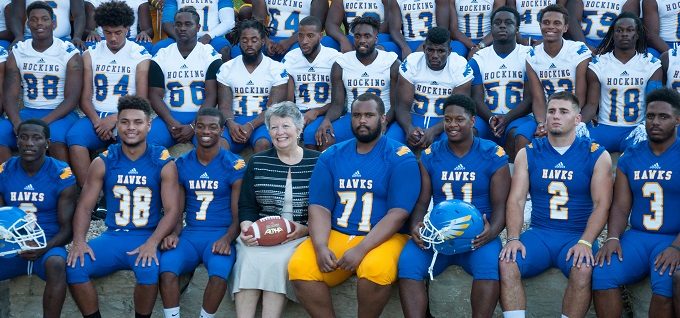Surviving a vote of no confidence
By Ellie Ashford
March 8, 2017
No-confidence votes against community college presidents are on the rise. How do presidents move past it?
A vote of no confidence needn’t be a kiss of death anymore for a college president, according to new research and feedback from seasoned community college leaders.
In fact, some of them, who have gone through the process themselves, say in certain cases it shows college boards that the CEO is willing to make tough and sometimes unpopular decisions when necessary.
These votes typically occur because “someone doesn’t like what you did, rather than because you did something wrong,” says Betty Young, who’s been through no-confidence votes at three separate colleges and currently serves as president of Hocking College in Ohio.
“Often, it’s a business decision that may have not given someone the result they wanted,” she says. “But all the public hears is a sound bite that seems really ominous.”
Young will speak about her experiences at a session at the American Association of Community Colleges’ (AACC) Annual Convention in New Orleans April 22-25, along with Robert Hill, associate professor of higher education leadership at Nova Southeastern University in Florida, and William Austin, president of Warren County Community College (New Jersey), and a member of the AACC board of directors.
On the rise
Research by Austin shows no-confidence votes against community college presidents have been more frequent since the Great Recession and are also more common in states with strong labor unions, such as New York, New Jersey, Ohio and Michigan. They are less likely to occur in right-to-work states, with Tennessee being an exception.
Austin found that 51 percent of presidents of AACC member colleges who had had been subject to a no-confidence vote since 2008 had stayed in office. Among those who left, only about 18 percent were fired or didn’t have their contracts renewed, and that was usually because of a scandal investigation or some other major problem. Most resigned, retired or took other jobs.
“You see this more in institutions going through significant change,” Austin says. Budget cutbacks were often a key factor, along with objections to curriculum changes, staffing cuts and financial management.
Other factors
Hill cites additional issues that could lead to a vote of no confidence: lack of transparency, not allowing faculty to participate in decisions, labor disputes, contract violations and increasing faculty workloads.
“Higher education is experiencing dramatic change, and we don’t handle change that well,” Hill says. “When faculty become frustrated – and feel they have less of a voice – this is one way to call attention to a problem.”
Instead of trying to work out conflicts informally, as had been the norm in the past, some faculty are now more likely to go for what he calls the “nuclear option.”
“Often it has to do with the magic word, which is communication,” Austin says. Faculty often feel like they weren’t consulted enough before the change. “But sometimes, when you do communicate, the receiver doesn’t like the message.”
“It’s become so much harder to be a president than it had been,” Austin says. “After the recession, more transparency and more accountability are required, while there’s been a decline of resources.” Faculty tend to blame a new president who imposes austerity measures, even though problems could have started under a previous administration.
There’s more to the story. Read the full article at Community College Daily, then discuss it at LinkedIn.


